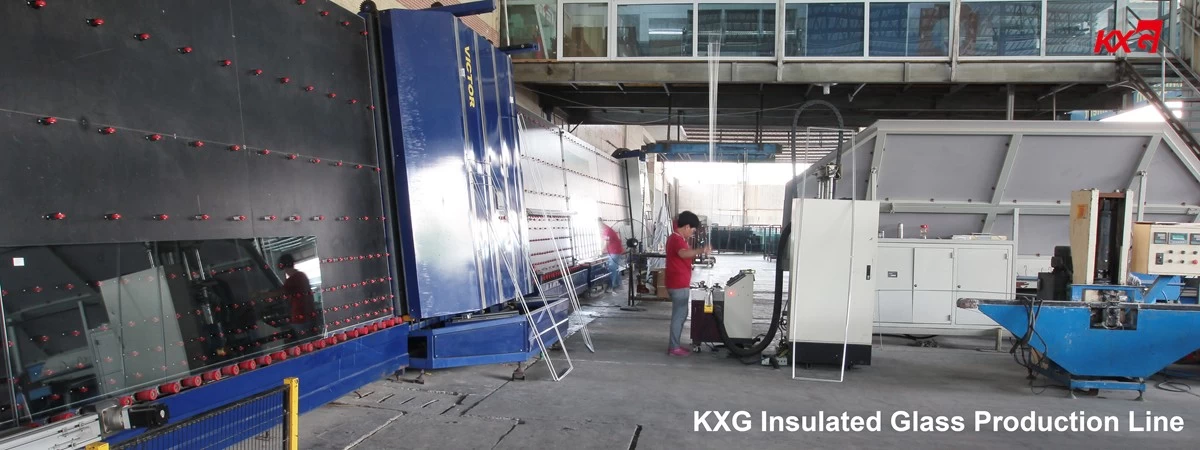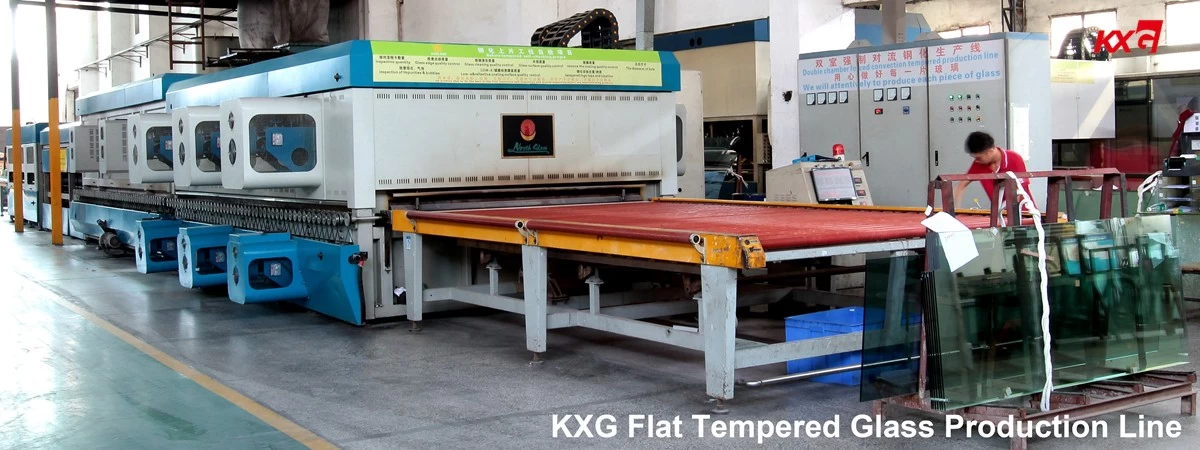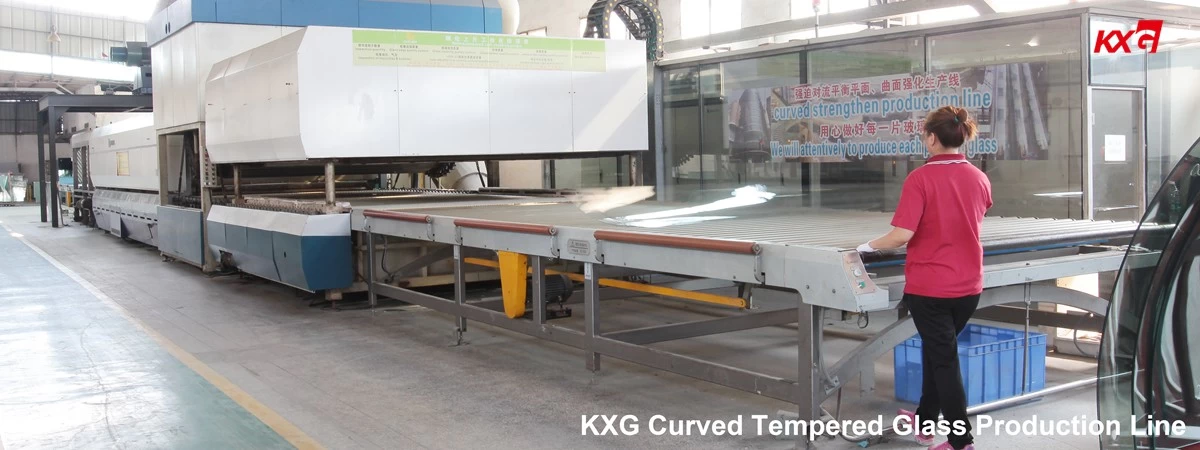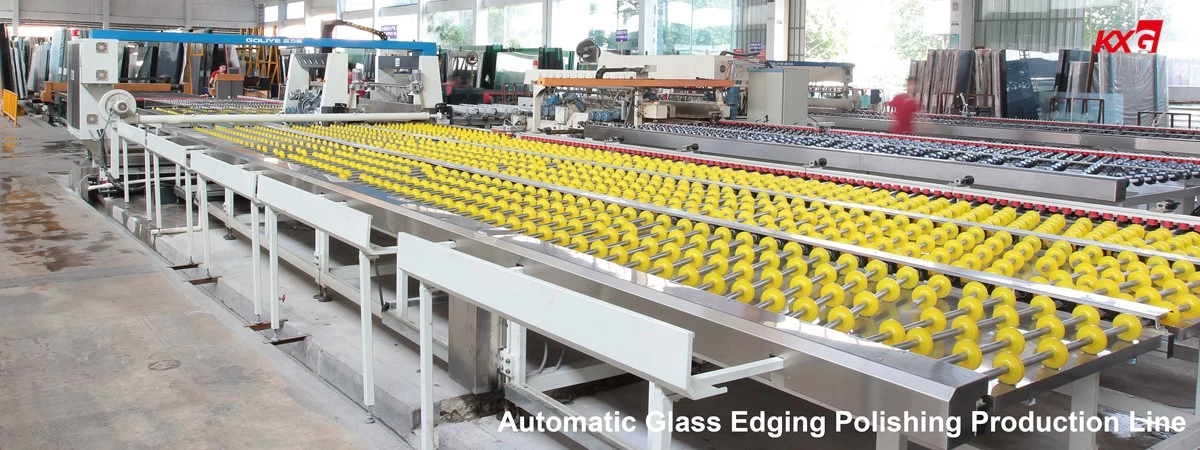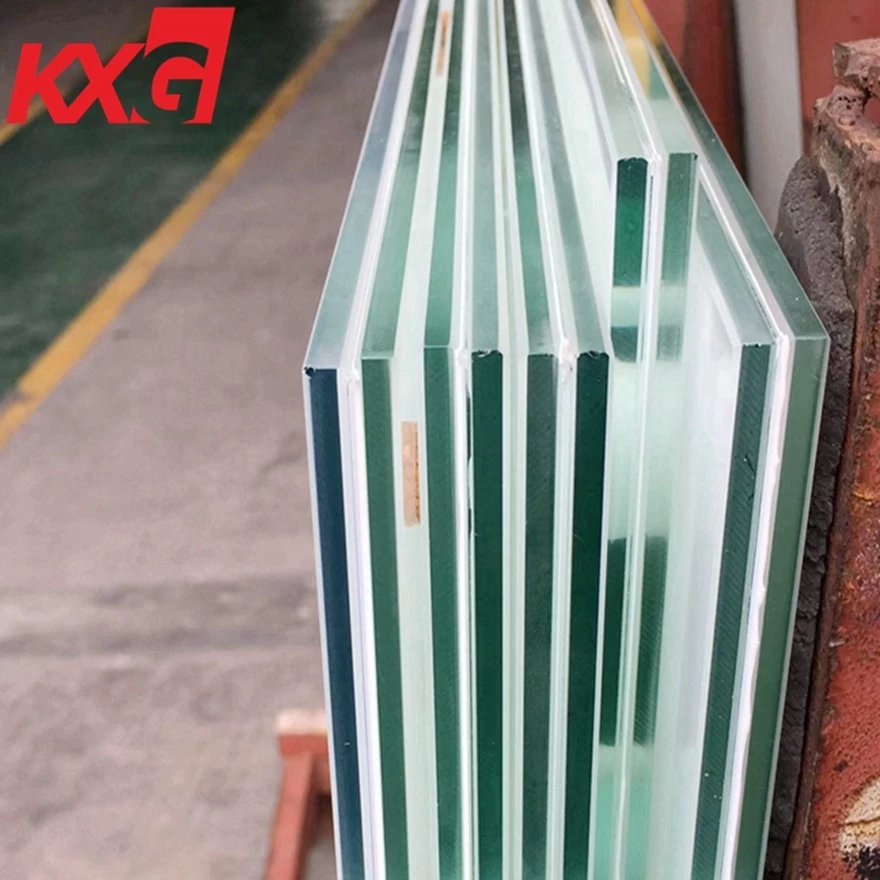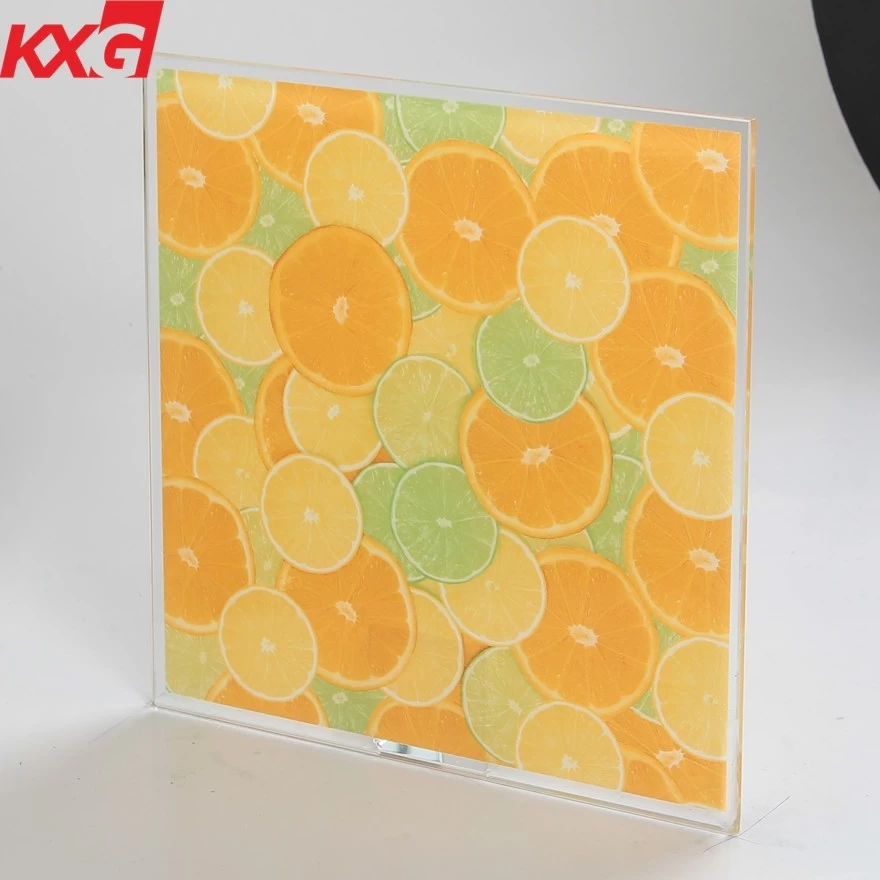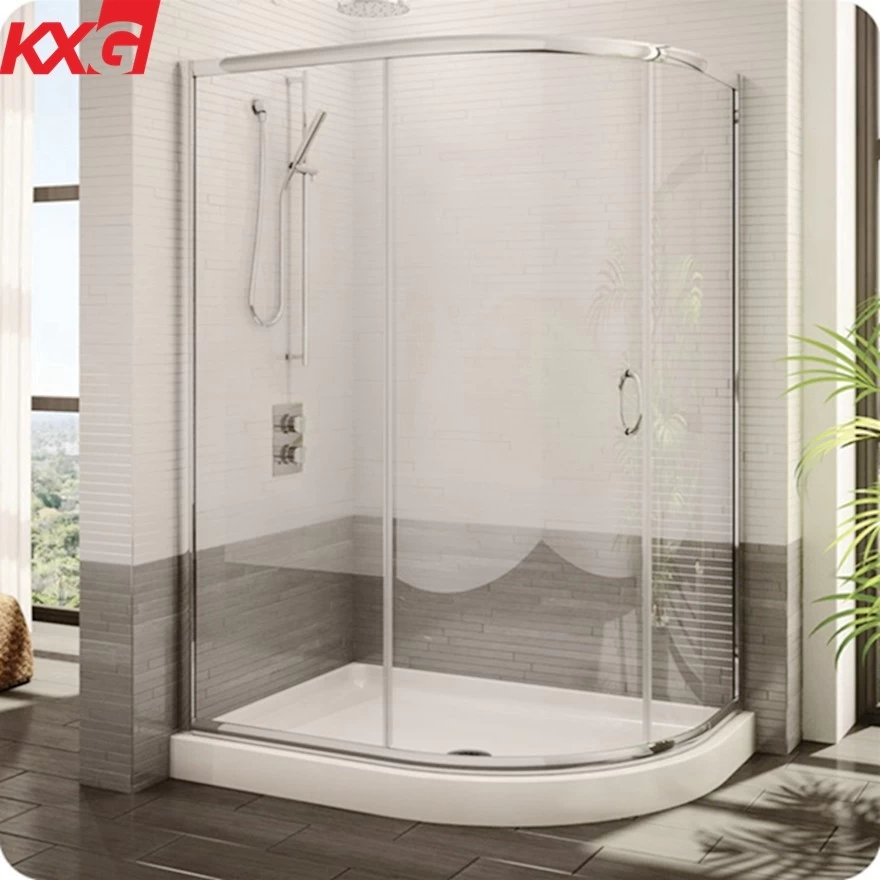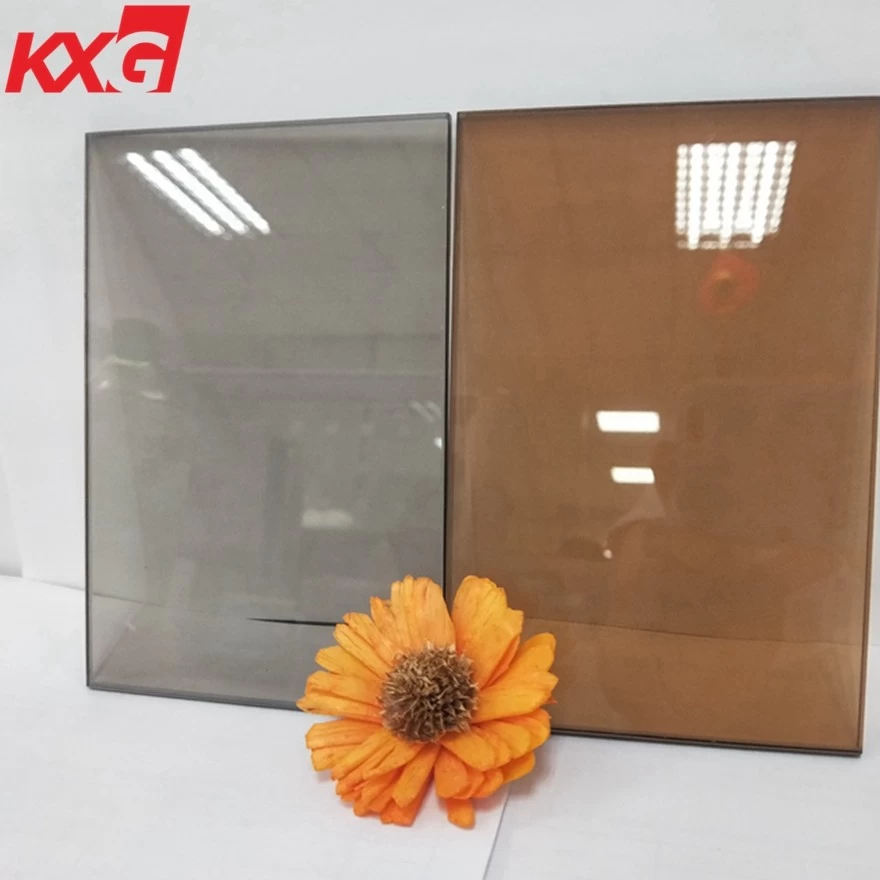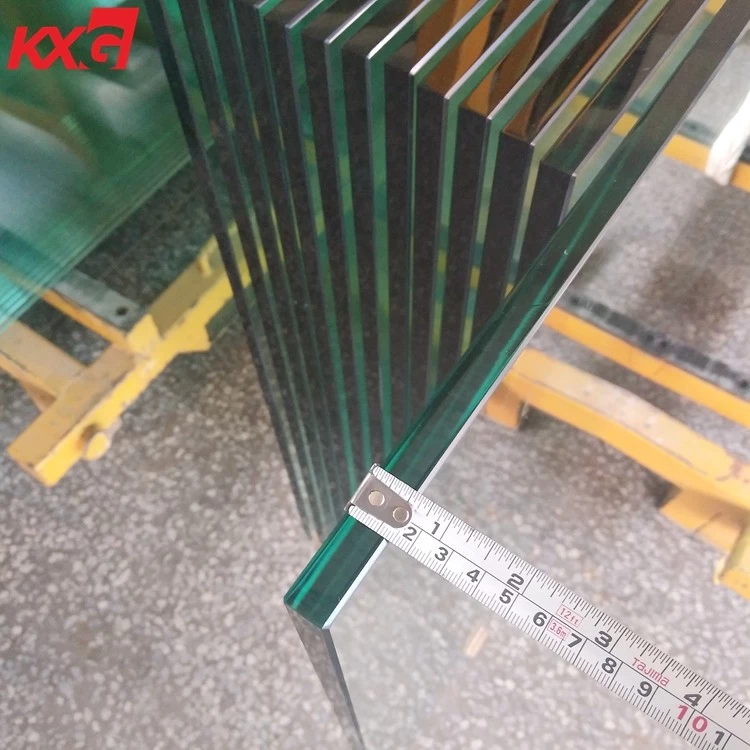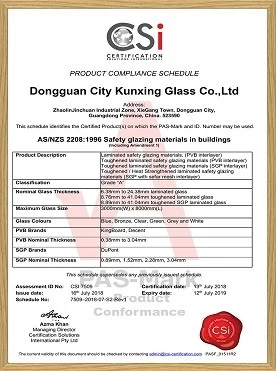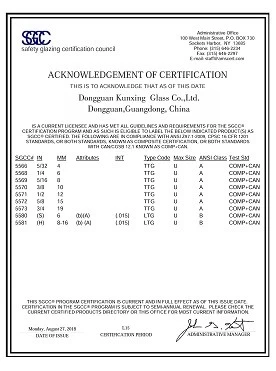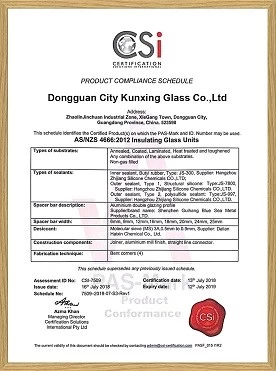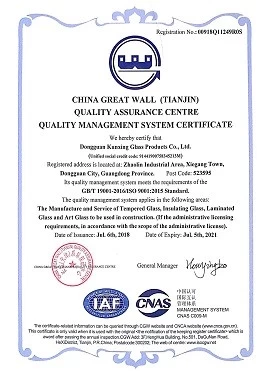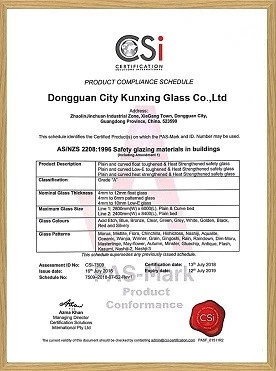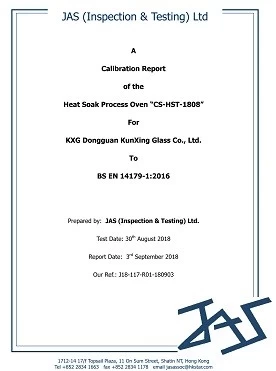Introduction to building glass knowledge
DONGGUAN KUNXING GLASS CO LTD
Internet
2019-05-30 09:16:22
Ordinary tile cement construction has not kept up with the level of contemporary development and cannot meet the needs of consumers. So invented the architectural glass, with the ability to adjust light, thermal insulation, safety (bulletproof, anti-theft, fire, radiation, anti-electromagnetic interference), art decoration and other characteristics. The huge demand has led to a rapid increase in the amount of glass used in construction, making it the third largest building material after cement and steel. There are different types and characteristics of architectural glass subdivisions that are common in life.
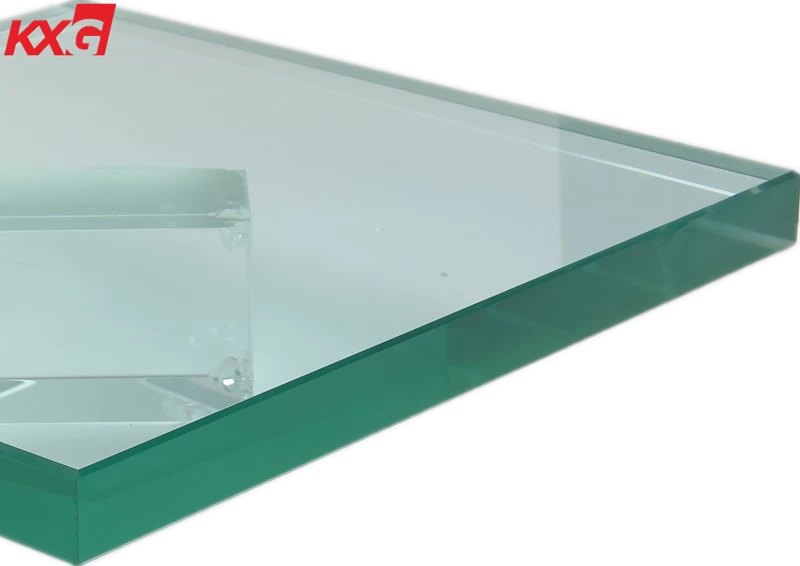
Flat glass
1. Window glass: The flat glass for windows is also called flat glass or lens glass, referred to as glass, which is a flat glass without grinding. It is mainly used for windows, walls and exterior decoration of buildings. It can also be used for store counters, shop windows and doors and windows of some vehicles.
2. Polished glass: polished glass is called mirror glass or white glass. It is polished and polished flat glass, which is divided into single-sided polishing and double-sided polishing. Commonly used to install large-scale high-grade doors and windows, shop windows or mirrors.
3. Colored glass: Colored glass is also called colored glass, which is divided into transparent and opaque. Can be assembled into a variety of patterns and patterns, suitable for doors and windows, interior and exterior walls and lighting areas with special requirements for light.
4. Stained glass: Stained glass is a high-grade decorative glass product with a wide range of uses. Screen painting technology can faithfully copy the original painting onto the glass. Stained-glass can be used for doors and windows, interior and exterior curtain walls, ceiling chandeliers, light boxes, wall decorations, furniture, screens, etc. in homes, office buildings, shopping malls and entertainment venues, using different patterns and pictures to achieve a higher artistic mood.
5. Grating glass: Grating glass, also called laser glass, is a laser decorative material formed by micro-etching of laser surface on glass substrate, so that ordinary glass can display three-dimensional stereoscopic images under white light conditions. Suitable for home and public facilities and cultural and entertainment venues, interior and exterior walls, facade signs, billboards, ceilings, screens, doors and windows and other landscaping.
6. Decorative mirror: Decorative mirror is an indispensable material for interior decoration. High quality float plate glass and vacuum aluminized or silver plated mirrors. It can be used for decoration of halls, columns, walls, ceilings, etc. in buildings (especially in narrow spaces).
7. Embossed glass: embossed glass, also known as patterned glass or knurled glass, is a flat glass with a pattern pattern formed by continuous rolling of a patterned cylinder with a colorless or colored glass liquid. The embossed glass is suitable for interior decoration and separation of various occasions with different requirements for perspective, and can be used for processing handicrafts and daily necessities such as screens and table lamps.
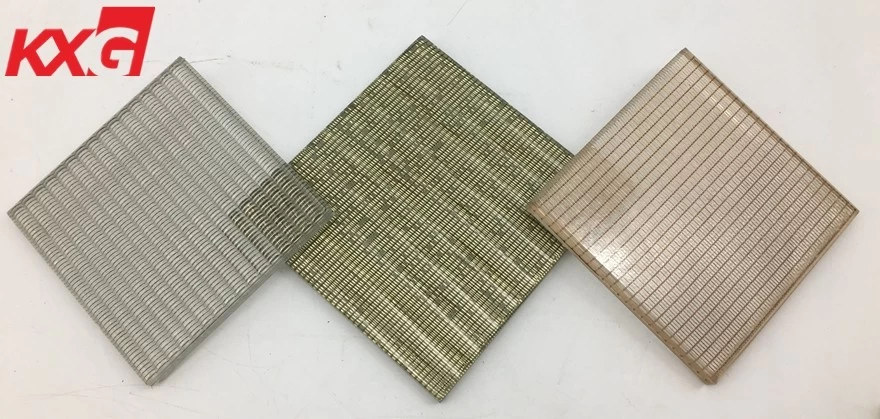
Safety glass
1. Tempered glass: Tempered glass is obtained by heating flat glass to a softening temperature, rapidly cooling it to quench or chemically exchange it. It has 5 to 6 times higher bending strength than ordinary glass, 3 times higher impact strength and about 5 times higher toughness. When the tempered glass is broken, it does not form sharp and angular fragments, and thus does not injure people. It is used for anti-vibration and anti-collision parts such as doors and windows, partition walls and public places of buildings. Curved tempered glass is mainly used for doors and windows of large public buildings, skylights for industrial plants and window glass.
2. Laminated glass: Laminated glass is a flat or curved composite glass product obtained by heat-pressure bonding two or more flat glass sheets with a transparent plastic sheet. Due to the intermediate bonded plastic lining, the glass does not splash when broken, resulting in radial cracks, which does not hurt people, and therefore makes the impact strength much higher than that of ordinary glass. Laminated glass is suitable for doors and windows with high safety requirements, such as doors and windows of high-rise buildings, doors and windows of buildings, basements, doors and windows of buildings such as banks, and merchandise display cabinets and window displays.
3. Wired glass: Wired glass is obtained by heating ordinary flat glass to a red heat softening state, and then pressing the preheated metal wire or metal mesh into the glass. Since the wired glass has uniform internal stress and impact strength, when the glass is broken by external factors, the fragments can stick to the wire (mesh) to prevent the debris from splashing and injuring people. This glass also has the effect of blocking flames and spreading fire. Wire-dyed glass is suitable for doors and windows, roofing, daylighting windows, warehouses, library doors and windows, building composite exterior walls and transparent fences.
4. Anti-theft glass: Anti-theft glass is a special type of laminated glass. It is generally made of tempered glass, extra-thick glass, reinforced plexiglass, polished rayon glass, etc., which is laminated with resin glue and embedded in the middle interlayer. Wires and sensitive detectors are connected to the alarm device.
Special glass
1. Endothermic glass: The endothermic glass is a flat glass obtained by introducing a coloring agent having endothermic properties into the glass liquid or by spraying a colored oxide film having heat absorbing properties on the surface of the glass. The heat absorbing glass is suitable for the doors and windows, curtain walls, merchandise display windows, computer rooms and windshields of trains, cars and ships, which need both lighting and heat insulation, especially in hot areas, air conditioning, glare-proof large public buildings. glass.
2. Heat-reflecting glass: Heat-reflecting glass is a coated glass made by spraying gold, silver, aluminum, copper, nickel, ferrochrome and other metals and metal oxides or adhering organic film on the surface by heat, evaporation and chemical methods. Heat reflective glass is the most effective anti-sun glass in modern times. Heat-reflecting glass is suitable for doors and windows, glass curtain walls, fossils of public buildings and various decorative parts of modern high-grade buildings. It is used to make double-layer insulating glass and glass curtain wall with air layer to achieve excellent thermal insulation. And energy saving effects.
3. Color-changing glass: Photochromic glass is a photochromic glass obtained by adding silver halide to glass or adding a photosensitive compound of molybdenum and tungsten to a glass and an organic interlayer. When the photochromic glass is exposed to the sun or other light, its color will gradually darken as the light increases. After the irradiation is stopped, it can automatically return to the original color. It can also achieve the effect of automatically adjusting the indoor light. Photochromic glass is mainly used for buildings that require glare avoidance and that require automatic adjustment of light intensity.

Flat glass
1. Window glass: The flat glass for windows is also called flat glass or lens glass, referred to as glass, which is a flat glass without grinding. It is mainly used for windows, walls and exterior decoration of buildings. It can also be used for store counters, shop windows and doors and windows of some vehicles.
2. Polished glass: polished glass is called mirror glass or white glass. It is polished and polished flat glass, which is divided into single-sided polishing and double-sided polishing. Commonly used to install large-scale high-grade doors and windows, shop windows or mirrors.
3. Colored glass: Colored glass is also called colored glass, which is divided into transparent and opaque. Can be assembled into a variety of patterns and patterns, suitable for doors and windows, interior and exterior walls and lighting areas with special requirements for light.
4. Stained glass: Stained glass is a high-grade decorative glass product with a wide range of uses. Screen painting technology can faithfully copy the original painting onto the glass. Stained-glass can be used for doors and windows, interior and exterior curtain walls, ceiling chandeliers, light boxes, wall decorations, furniture, screens, etc. in homes, office buildings, shopping malls and entertainment venues, using different patterns and pictures to achieve a higher artistic mood.
5. Grating glass: Grating glass, also called laser glass, is a laser decorative material formed by micro-etching of laser surface on glass substrate, so that ordinary glass can display three-dimensional stereoscopic images under white light conditions. Suitable for home and public facilities and cultural and entertainment venues, interior and exterior walls, facade signs, billboards, ceilings, screens, doors and windows and other landscaping.
6. Decorative mirror: Decorative mirror is an indispensable material for interior decoration. High quality float plate glass and vacuum aluminized or silver plated mirrors. It can be used for decoration of halls, columns, walls, ceilings, etc. in buildings (especially in narrow spaces).
7. Embossed glass: embossed glass, also known as patterned glass or knurled glass, is a flat glass with a pattern pattern formed by continuous rolling of a patterned cylinder with a colorless or colored glass liquid. The embossed glass is suitable for interior decoration and separation of various occasions with different requirements for perspective, and can be used for processing handicrafts and daily necessities such as screens and table lamps.

Safety glass
1. Tempered glass: Tempered glass is obtained by heating flat glass to a softening temperature, rapidly cooling it to quench or chemically exchange it. It has 5 to 6 times higher bending strength than ordinary glass, 3 times higher impact strength and about 5 times higher toughness. When the tempered glass is broken, it does not form sharp and angular fragments, and thus does not injure people. It is used for anti-vibration and anti-collision parts such as doors and windows, partition walls and public places of buildings. Curved tempered glass is mainly used for doors and windows of large public buildings, skylights for industrial plants and window glass.
2. Laminated glass: Laminated glass is a flat or curved composite glass product obtained by heat-pressure bonding two or more flat glass sheets with a transparent plastic sheet. Due to the intermediate bonded plastic lining, the glass does not splash when broken, resulting in radial cracks, which does not hurt people, and therefore makes the impact strength much higher than that of ordinary glass. Laminated glass is suitable for doors and windows with high safety requirements, such as doors and windows of high-rise buildings, doors and windows of buildings, basements, doors and windows of buildings such as banks, and merchandise display cabinets and window displays.
3. Wired glass: Wired glass is obtained by heating ordinary flat glass to a red heat softening state, and then pressing the preheated metal wire or metal mesh into the glass. Since the wired glass has uniform internal stress and impact strength, when the glass is broken by external factors, the fragments can stick to the wire (mesh) to prevent the debris from splashing and injuring people. This glass also has the effect of blocking flames and spreading fire. Wire-dyed glass is suitable for doors and windows, roofing, daylighting windows, warehouses, library doors and windows, building composite exterior walls and transparent fences.
4. Anti-theft glass: Anti-theft glass is a special type of laminated glass. It is generally made of tempered glass, extra-thick glass, reinforced plexiglass, polished rayon glass, etc., which is laminated with resin glue and embedded in the middle interlayer. Wires and sensitive detectors are connected to the alarm device.
Special glass
1. Endothermic glass: The endothermic glass is a flat glass obtained by introducing a coloring agent having endothermic properties into the glass liquid or by spraying a colored oxide film having heat absorbing properties on the surface of the glass. The heat absorbing glass is suitable for the doors and windows, curtain walls, merchandise display windows, computer rooms and windshields of trains, cars and ships, which need both lighting and heat insulation, especially in hot areas, air conditioning, glare-proof large public buildings. glass.
2. Heat-reflecting glass: Heat-reflecting glass is a coated glass made by spraying gold, silver, aluminum, copper, nickel, ferrochrome and other metals and metal oxides or adhering organic film on the surface by heat, evaporation and chemical methods. Heat reflective glass is the most effective anti-sun glass in modern times. Heat-reflecting glass is suitable for doors and windows, glass curtain walls, fossils of public buildings and various decorative parts of modern high-grade buildings. It is used to make double-layer insulating glass and glass curtain wall with air layer to achieve excellent thermal insulation. And energy saving effects.
3. Color-changing glass: Photochromic glass is a photochromic glass obtained by adding silver halide to glass or adding a photosensitive compound of molybdenum and tungsten to a glass and an organic interlayer. When the photochromic glass is exposed to the sun or other light, its color will gradually darken as the light increases. After the irradiation is stopped, it can automatically return to the original color. It can also achieve the effect of automatically adjusting the indoor light. Photochromic glass is mainly used for buildings that require glare avoidance and that require automatic adjustment of light intensity.

